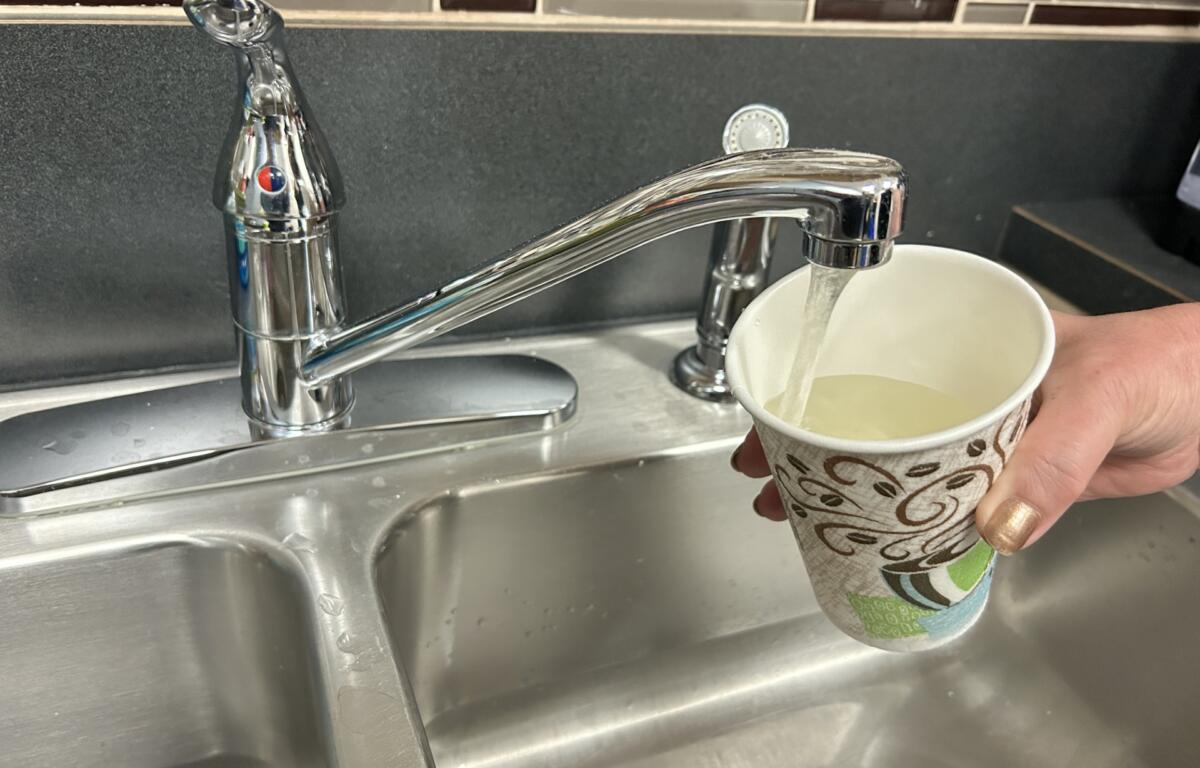ASHEVILLE, N.C. (828newsNOW) — Is the end of Asheville’s Helene-related water woes in sight?
If you ask Asheville Water Resources Department Public Information Officer Clay Chandler, the answer is maybe.
The North Fork Reservoir, which serves about 80 percent of Asheville’s water customers, suffered catastrophic damage when the remnants of Hurricane Helene swamped the area, sending streams, creeks and rivers roaring through mountain valleys in late September.
Crews spent weeks trying to get a 36-inch emergency bypass pipe at the reservoir repaired.
Chandler said Friday the original plan was to not push any water through the system until it was potable.
“We quickly got rid of that plan,” Chandler said because people needed water for flushing, hygiene, etc. “Plan B is what they’re doing now, pushing the raw water into the pipe.”
That water is suitable for flushing but not for drinking.
Turbidity curtains have been installed at the reservoir, and another round of in-reservoir treatment finished Thursday.
“In-reservoir treatment process was probably Plan B and C,” Chandler said during a Helene Recovery Small Business Info Session on Friday.
Though the overall turbidity of the reservoir remains high, levels are dropping. Chandler said the latest turbidity measurement was 19.8. That was the first time the Nephelometric Turbidity units were below 20 since before Helene, he said.
To be safe for the normal treatment process, turbidity needs to fall somewhere 1.5 and 2 NTUs.
Chandler said NTUs are averaging a 0.6 to 0.7 drop a day.
More help for Asheville
Now, the U.S. Army Corps of Engineers has joined water crews in their efforts to clear the water in the normally pristine reservoir.
“They have been working on what we call alternative treatment solution,” Chandler said.
Late Wednesday, the U.S. Army Corps of Engineers notified the city of a plan that would treat about 25 million gallons of water a day at North Fork Reservoir.
“That’s enough volume to push water into the potable, that’s potable water into the system at a rate that will flush all the non-potable water,” Chandler said.
He said the Corps of Engineers couldn’t begin work “until they received their mission.”
“That happened Wednesday afternoon. There was a gentleman in town that has stars on his collar, and, Wednesday afternoon, he pushed the button,” Chandler said.
It’s about a 35-day build-out process, he said. And the Corps of Engineers is about three days into the operation.
Chandler said engineers will put multiple portable filtration units along the reservoir’s dam. Those units will send water to clear wells, which hold a couple million gallons.
“Then we’ll send it through our normal filtration processes and get you the pristine water that you have become accustomed to as a city of Asheville water customer,” Chandler said.
The system has been pushing 10-15 million gallons of filtered water a day into the pipes, where it is mixing with the raw water.
“So, that blending process helps us primarily to start to reintroduce corrosion controls to our water pipes,” Chandler said. “So, it’s probably, the pipes went probably fourish weeks without any kind of corrosion control, which is not long enough to cause an issue.”
Drinkable water?
So, what does all that mean for Asheville water customers?
Preliminary estimates put potable water hitting the system and flushing to begin sometime around Thanksgiving.
But flushing the system and refilling pipes and tanks with potable water will probably take another two to three weeks.
“Blending with the raw water from the reservoir, hopefully, will shorten that flushing process because you’re not, you know, some of the system will have technically potable water, although it’ll be mixing with raw water from the reservoir,” Chandler said.
But he cautioned that many factors will play into how long it takes.
“Even under normal conditions, it’s hard to operate a water system in the mountains,” Chandler said.
Weather could hamper recovery efforts.
“We do not need another wind storm. Rain like we’re getting today … soft, coming straight down … will be very helpful. But we don’t want any heavy rainfall,” Chandler said.


